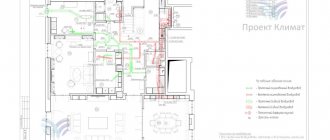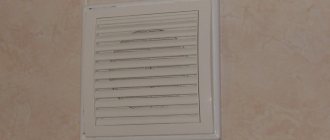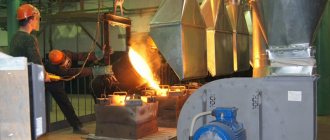Before moving on to the types of air conditioning systems, as well as highlighting their advantages and disadvantages, let us explain the very concept of “air conditioning”. Air conditioning means the creation and maintenance of specified air parameters in a room (temperature, humidity, etc.), ensuring a comfortable stay for people in the room. However, in the everyday understanding, the essence of air conditioning comes down to cooling the air in the hot season and with the possibility of heating the air in the winter, when the heating has not yet been turned on.
It’s hard to imagine the modern world without air conditioning. They are installed almost everywhere, from the offices of large companies to public transport. Having decided to install an air conditioner, we inevitably face many questions: which air conditioner is more profitable to install at home, and which one is more suitable for the office? Is it possible to install an air conditioner in a children's room, and if so, which one? What should be the power of the air conditioner depending on the area of the cooled (heated) room? And the countless list of questions does not end there, because air conditioners differ not only by the name of the manufacturer: they are also divided by their functionality, power, appearance, etc.
The air conditioner is a closed circuit consisting of a compressor, evaporator, fans, valves and connecting lines, through which refrigerant (freon) circulates.
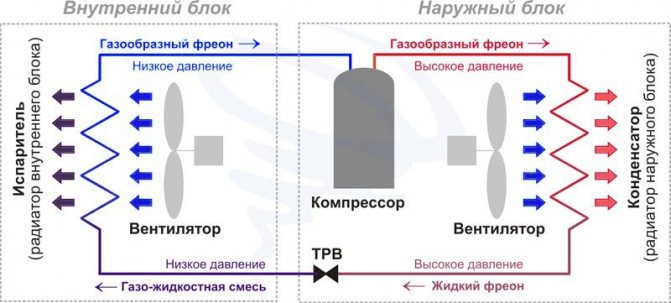
There is low pressure freon at the compressor inlet. Due to the work performed by the compressor, the gaseous freon is compressed and at the outlet of the compressor a refrigerant under high pressure is obtained, which is sent to the condenser (radiator of the outdoor unit), where due to heat exchange with atmospheric air, the freon transitions into a liquid aggregate state (condensation). Then the liquid freon is sent to the evaporator, having previously passed through a thermostatic valve, where its pressure decreases. In the evaporator, having taken heat from the “internal” air, freon again becomes gaseous. The cycle is completed.
According to the temperature control method, air conditioners are divided into two types:
- Inverter
- Not inverter
Is the air conditioner inverter or regular? Which one to choose, and what is the fundamental difference?
Operating principle of a non-inverter air conditioner
The device starts up. A special sensor built into the indoor unit measures the temperature in the room and compares it with the temperature we set (desired). If these temperatures are different, then the compressor starts working (immediately at constant and full power!), and the air in the room acquires the set parameters. After which the compressor turns off, and only the fan of the indoor unit works, which moves the room air. As soon as the sensors of the indoor unit detect a certain temperature change, the compressor starts working again. And so on in a circle.
When this type of air conditioner operates, the room temperature fluctuates within a certain temperature range (approximately +-3°C). The compressor is either turned off or running at full power. Due to this periodic switching on/off of the compressor, more electrical power is consumed, and the set temperature level is reached more slowly.
Another thing is an inverter air conditioner. The adjective “inverter” speaks for itself: air conditioners of this type are equipped with inverters. Let's figure out what an inverter is in an air conditioner?
An inverter is a device used to convert direct current into alternating current. The alternating current from the network enters an electrical filter, where unwanted noise is suppressed and sudden voltage surges are smoothed out. Then the “pure” alternating current of a sinusoidal nature enters the rectifier unit, where its constant component is separated, which is brought to the required current and voltage parameters. In the inverter, a three-phase alternating voltage is received from direct voltage to power the compressor. Thus, the compressor operates smoothly and continuously, changing power.
When the inverter air conditioner is turned on, the sensor measures the room temperature. After which the compressor turns on, which no longer operates at full load (as in conventional air conditioners), but automatically selects the appropriate (optimal) power level necessary to cool or heat the air in the room. At the same time, as soon as the temperature reaches the desired level, the compressor does not turn off, but begins to work in reduced power mode, constantly maintaining the temperature we need.
These air conditioners are less energy-consuming (energy savings are approximately 30%), but more expensive. Inverter air conditioning systems do not allow temperature jumps during operation, and also reach the desired temperature level in the room twice as quickly. At the same time, due to the smooth and continuous operation of the compressor, they are more durable (continuous operation of the compressor eliminates the harmful effects of inrush currents).
Air conditioning - what is it?
In Russia, more and more often we have to face the fact that the term “air conditioning” is not used for its intended purpose, but rather for “prestigiousness” and for representative purposes.
For example, full air conditioning units are often called split systems, in which, essentially, only air is cooled (sometimes with dehumidification) and heated in the heat pump cycle, but without supplying outside air with its corresponding treatment.
Air conditioning systems also include so-called fan coils, i.e. fan heat exchangers capable of either cooling the air (sometimes with dehumidification) or heating it.
Very often, air conditioning systems are understood as ventilation units with air humidification in winter.
Other examples can be given.
Historically, this situation is explained by the fact that air conditioning systems (ACS) were banned in our country for a certain time as a supposedly bourgeois branch of technology, and subsequently, starting in the 1950s, due to the intensification of fortification construction and the development of modern industries, air conditioning air in the USSR began to develop at an accelerated pace. This development occurred primarily within the framework of industrial ventilation, where air conditioning itself was given relatively little independent importance. Therefore, it is no coincidence that the functions of air conditioning are attributed to industrial ventilation. An example is the definition of ventilation given by I. F. Livchak. In his opinion: “Ventilation is designed to provide the necessary cleanliness, temperature, humidity and air mobility.”
A completely different definition of air conditioning is given in the same encyclopedia by E. E. Karpis and B. V. Barkalov: “Air conditioning is the creation and maintenance (automatic) of air parameters (temperature, relative humidity, air purity, speed of movement and pressure), the most favorable for the well-being of people (comfortable air conditioning), the conduct of technological processes, the operation of equipment and devices, ensuring the safety of cultural objects and art. Air conditioning often functions as ventilation.”
Next, we will dwell on the definition of air conditioning given by authoritative Russian experts.
For example, V.N. Bogoslovsky states that “air conditioning systems are an active, controlled system designed to comprehensively maintain specified internal air parameters that provide calculated, often optimal, conditions in the premises of buildings and structures.”
According to V.N. Bogoslovsky, HVACs work in a building together with heating and ventilation systems, but usually take on the functions of the latter and create the necessary climatic conditions in the building, or at least in its most critical rooms, both in cold and cold weather. during warm periods of the year.
V. N. Bogoslovsky considers SCR one of the means of ensuring the parameters of the internal microclimate (SCM). One can argue with this, because the microclimate itself does not include in its system such important factors as the purity and gas composition of the air.
Next, let's look at the definitions of air conditioning given by other authoritative experts.
Both V.N. Yazykov and A.V. Nesterenko do not give a clear definition of air conditioning.
Very detailed definitions of ventilation and air conditioning are given in a recently published textbook edited by Professor V.I. Polushkin.
Let's look at these definitions.
“Ventilation (from the Latin word “ventilatio” - airing) is intended to ensure the exchange of air in the room and maintain it in a environment favorable to human well-being and health, as well as the technological process, the safety of building structures, equipment and materials, cleanliness, temperature, humidity and mobility air."
“Air conditioning (from the Latin word “condicio” - condition, state) - the creation and automatic maintenance of indoor air parameters (purity, temperature, humidity, composition, mobility and air pressure), most favorable for the well-being of people, the conduct of the technological process, ensuring the safety of cultural and art values, etc., regardless of changes in outdoor air parameters.”
Note that in these definitions, in addition to the not entirely successful edition, ventilation is attributed to qualities inherent only to air conditioning, in particular, the regulation of relative air humidity in rooms. Indeed, some ventilation systems provide for humidification of the air supplied to the premises in winter, but this is very far from regulating it. In the same way, the temperature of the ventilation air is maintained at a certain level only during the winter period. In the room, the temperature during this period is determined by the heating system, which can also be air.
In addition, ventilation systems are primarily designed to maintain the gas composition of the air in the premises served, and this is precisely what is not included in the definition.
As for the definition of air conditioning, it is, in our opinion, more successful, although we must not forget here about internal factors that violate the required indoor air parameters.
E. V. Stefanov dwells in great detail on the problems solved by ventilation and air conditioning systems, their common features and differences. In his opinion, the tasks solved with the help of ventilation and air conditioning systems are to create in the premises of buildings for various purposes such parameters of the air environment that would satisfy the requirements for it.
Methods and possibilities for solving these problems are different for ventilation and air conditioning systems.
When equipping a building or structure with ventilation systems, the solution to these problems is generally achieved by supplying certain amounts of outside air, found by calculation, to the premises and removing contaminated air that is unsuitable for further use. The outside air entering the premises can be processed: cleaned of dust, heated in winter, cooled in summer due to the adiabatic process, etc. However, as a rule, ventilation systems do not provide for air cooling, just as heat and humidity treatment is not implemented , allowing you to create strictly defined temperature and humidity parameters of the processed air.
Air conditioning systems provide a large range of air treatment processes, with the help of which the highest and most varied requirements for the air parameters of indoor spaces can be satisfied. In this case, the state of the indoor air ceases to be dependent on the parameters of the outside (atmospheric) air. Therefore, it is no coincidence that air conditioning systems use such complex and relatively expensive processes of heat and humidity air treatment as cooling accompanied by dehumidification, which is usually achieved using refrigeration units. To ensure the specified indoor air parameters, both the supply of outside air, specially prepared, and the treatment of indoor air are widely used. Air conditioning systems always provide automatic control to maintain the specified air parameters.
The definition of air conditioning, which is given in some ASHRAE publications, will also be of interest: “Air conditioning systems are systems that provide indoor environmental conditions that allow people or products to function in optimal conditions.”
It cannot be said that this definition is complete, but the main thing in it is the creation of optimal conditions in the premises served by SCR, which can only be achieved by these systems, fully equipped with the appropriate devices and equipment.
As we see, in a number of definitions by leading experts, the functions of ventilation and air conditioning are not clearly delineated, and in some, the concept of ventilation includes tasks solved by air conditioning systems.
There appears to be a need to have a precise and unambiguous definition of air conditioning. Then, perhaps, in the literature, and in materials, and in company catalogs, etc., installations and systems that do not perform air conditioning functions will not be assigned a name that does not correspond to them.
In our opinion, this definition of air conditioning should sound something like this:
Air conditioning is a set of methods, means and devices that provide the required air conditions (temperature, relative humidity, mobility, gas composition, cleanliness, etc.) in a room with a given degree of accuracy, regardless of the influence of external and internal disturbing factors on it.
Types of air conditioning systems
Modern air conditioners are also classified into several groups.
By number of blocks:
Split systems. There is one external unit for one internal unit.
Multi-split systems. Several indoor units can be installed on one external unit. Usually these are 2-4 indoor units.
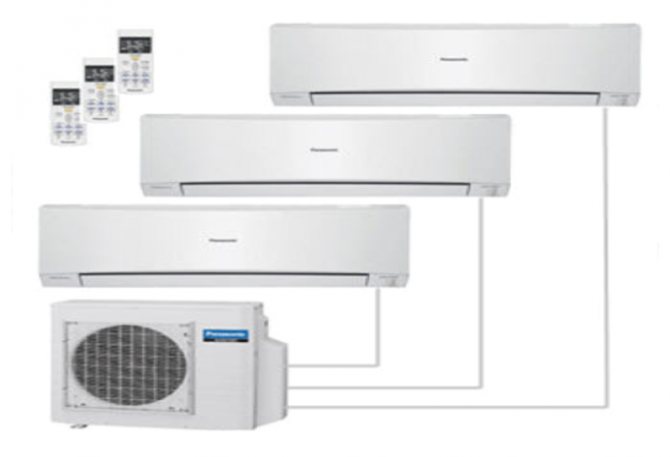
By purpose:
Household split systems, multi-split systems. Low power units (up to 5 kW) and a short route distance between the indoor and outdoor units (up to 15 m). This is due to the low compressor power. Such systems are usually installed in any small rooms (up to 50 m2) in apartments, houses, offices, etc.
Semi-industrial split systems, multi-split systems. Units are usually from 5 to 15 kW. The route between blocks can be from 30 to 45 m, depending on the brand and model.
Industrial multi-zone (VRF or VRV) systems. Such systems allow you to connect a very large number of units and set up dispatching. The power of the external unit can be from 10 kW to infinity (100-150 kW). Such systems are installed in large offices, shops, shopping centers, etc. The conditioning path can reach several hundred meters.
The abbreviation VRF itself stands for VariableRefrigerantFlow, which translated from English means “variable refrigerant flow”. At their core, multi-zone VRF air conditioning systems are a modernization of multi-split systems. They, like multi-split systems, have one external unit. However, the number of internal units that can be connected to an external one in this case can already be several dozen (usually up to 40 pieces). At the same time, indoor units can differ from each other both in power and type: duct, cassette, wall-mounted, ceiling-mounted (the types of indoor units will be discussed below).
The VRV system (VariableRefrigerantVolume) does not have any fundamental differences from the VRF system. They differ only in power, service life, possible number of indoor units, and reliability.
The aesthetic side of the issue is also a plus: after all, if all those rooms served by a multi-zone system were equipped with individual split systems, then there would simply be no “living space” left on the facade of the building from the countless number of external units.
It is important to note that the maximum distance between the external and internal units in height can be 50 meters, and “horizontally” - 100 meters, which makes it possible to place the external unit not only on the outer wall of the building (it can be placed on the roof, in the basement, and also near the building).
You can control a multi-zone air conditioning system either centrally (“single” remote control) or individually (there are separate remote controls for each indoor unit).
Read more about multi-zone air conditioning systems
By type of indoor units:
Wall-mounted – ordinary household air conditioners. The simplest and most inexpensive in terms of design and installation. Installed in apartments, houses and any small spaces
Wall-mounted air conditioners consist of two blocks: external and internal. The first of them is usually located under the window on the street side of the building. IMPORTANT! When installing the outdoor unit, it is necessary to monitor all kinds of “distortions”: any deviation of the outdoor unit from the horizontal plane negatively affects the circulation of the refrigerant.
The typical location of the indoor unit is under the ceiling (at a distance of 15-20 cm). There should also be free space left and right of the indoor unit. The indoor unit should not be exposed to sunlight or be away from heating devices. Also, it should not be placed near working or sleeping places.
When installing air conditioners of this type, you must remember the inter-unit distance: it directly affects the quality of the air conditioner, as well as its service life.
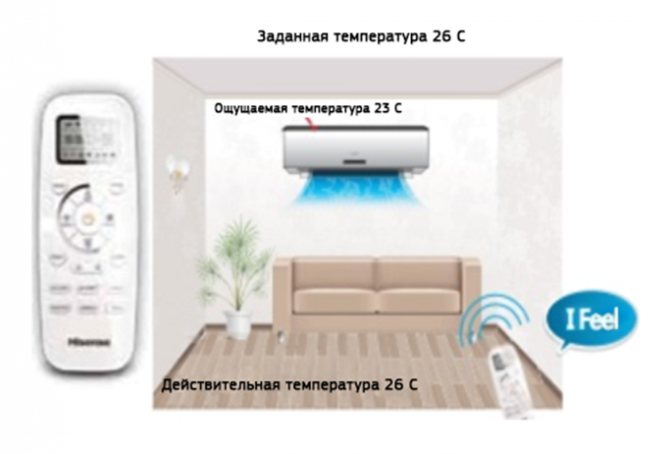
Perceived temperature from air conditioner
The optimal length of the freon route is about 5 meters, the maximum is about 15 meters. Each additional meter increases the load on the compressor (increases energy costs), reduces the power of the air conditioner, and also increases the price of the air conditioner. Restrictions are also imposed on the “height” distance: it is usually 8-10 meters.
The short length of communications also has a detrimental effect on the operation of the system. Therefore, if the blocks are located at a distance of less than 5 meters, the “excess”, twisted into a ring, is “hidden” behind the external block.
Types and composition of air conditioning and ventilation systems
Often, air conditioning and ventilation systems are combined into a single system, which allows significant savings on installation and increases the efficiency of the system.
Room ventilation consists of the following components:
- Air ducts. They move fresh and exhaust air. Structurally, air ducts can consist of flexible and rigid, round and square pipes, have adapters, adapters, splitters, turns, etc., which allows you to lay a route in rooms of any configuration.
- Air intake grilles. They protect the ventilation duct from debris, insects, rodents, precipitation, etc.
- Air valves. The ventilation ducts are closed while the system is turned off.
- Filters. They clean the air of dust and contaminants and are capable of trapping about 90% of microparticles.
- Heating device. Provides heating of the forced air.
- Fan system.
- Silencers.
- Automatic control system.
The list of climate equipment used for the air conditioning system includes:
- A supply and exhaust ventilation system that ensures the installation of a comfortable microclimate in all rooms.
- A system of duct fans that allows even distribution of fresh air through the ventilation ducts.
- Multi-zone centralized air conditioning and ventilation systems in premises, providing the ability to individually set climate parameters in individual zones and rooms.
- Climate system based on chiller-fan coil units.
You can order a project for air conditioning and ventilation of premises in Moscow, installation work for installing equipment, or get competent advice from a qualified specialist by calling the phone number listed on the website.
Duct air conditioners
A ducted split air conditioning system consists of an indoor and outdoor unit, to which a thermally insulated duct system is connected. The air conditioner is turned on and the temperature is controlled using a wall remote control.
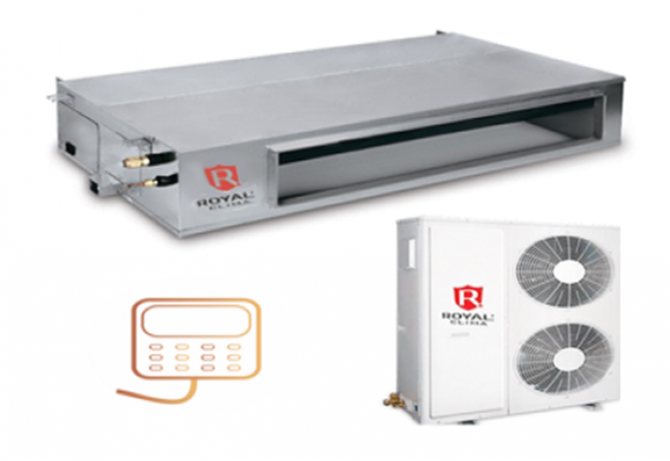
Operating principle of a duct air conditioner
Properly cooled air flows through the supply channels and is supplied to the room for cooling. Extracted heated air from the room is taken in through exhaust ducts. With the help of such a system, air circulates in the room. In essence, the process is the same as in a wall-mounted unit, which also draws in warm air and releases cooled air. Only in the case of a duct block there is a more uniform distribution of air flows, which is a positive characteristic of a duct air conditioner.
The design of the external unit of a ducted air conditioner is generally no different from the external units of other split systems (consists of a fan, radiator, compressor, etc.). The connection of a ducted air conditioner, as a rule, occurs in rooms equipped with a suspended ceiling or in rooms where equipped with other types of structures (for example, wall niches), which allow you to “hide” the indoor unit from the human eye. At the same time, there must always be access to the location of the indoor unit (if repair work is necessary).
Ventilation system design
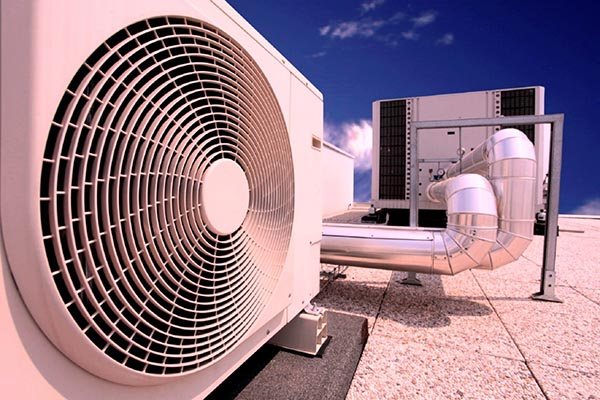
The most important point when heating a ventilation and air conditioning system is the development of a professional project. This work is not done by amateurs, but is entrusted to highly professional organizations that have extensive experience in this field and have an excellent reputation. Only high profile specialists can correctly calculate all the important indicators of ventilation and air conditioning, and advise you on the best option. And in this situation, no problems with the further operation of the systems will arise in the future. You can choose a good company either based on the recommendations of acquaintances and friends, or by turning to the Internet. As a rule, each project is individual and its cost reaches two dollars per square meter. But in order for the room to be cozy and comfortable, it is necessary to have a stable temperature, fresh air, and moderate humidity.






